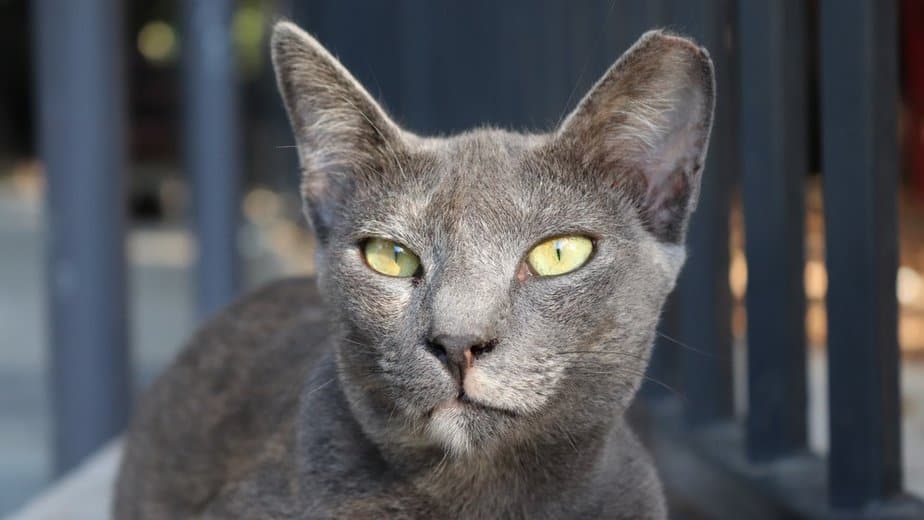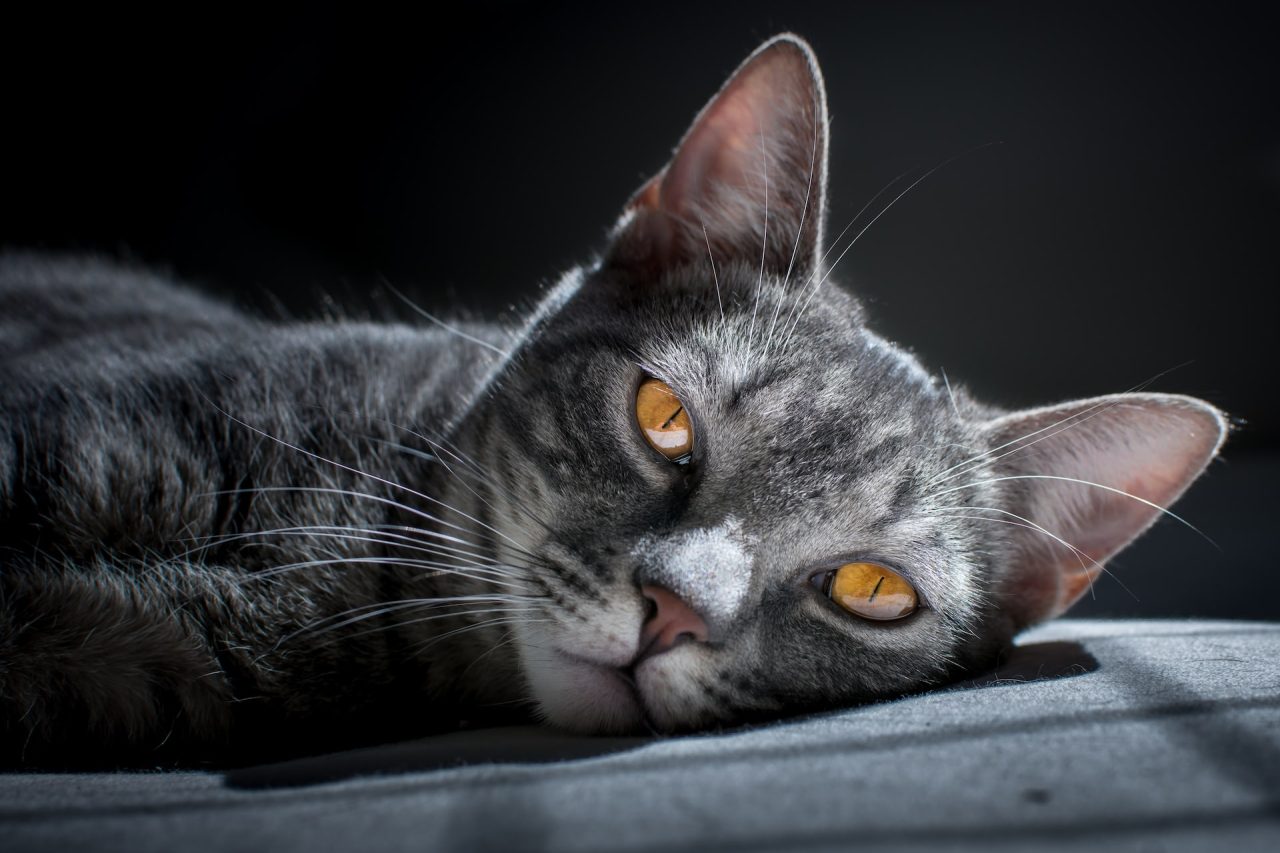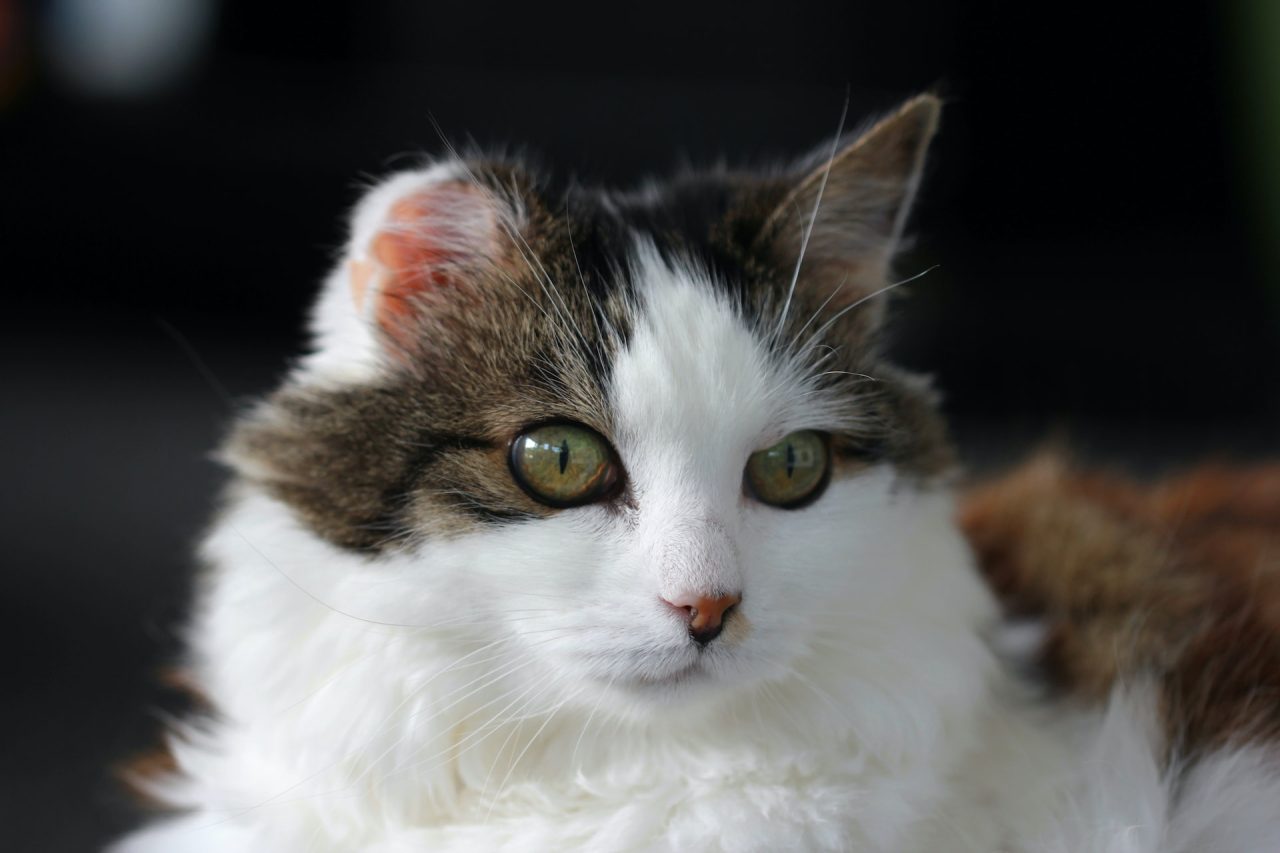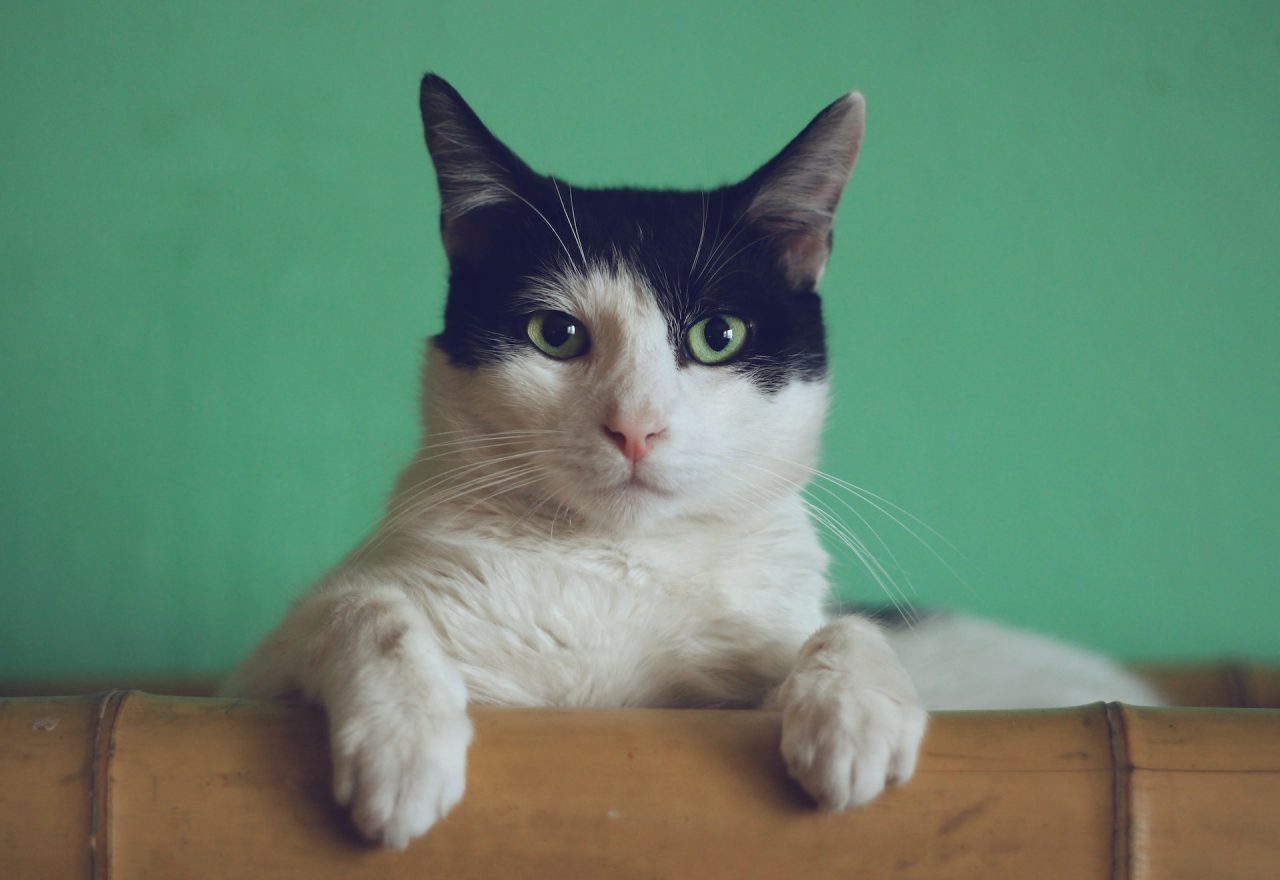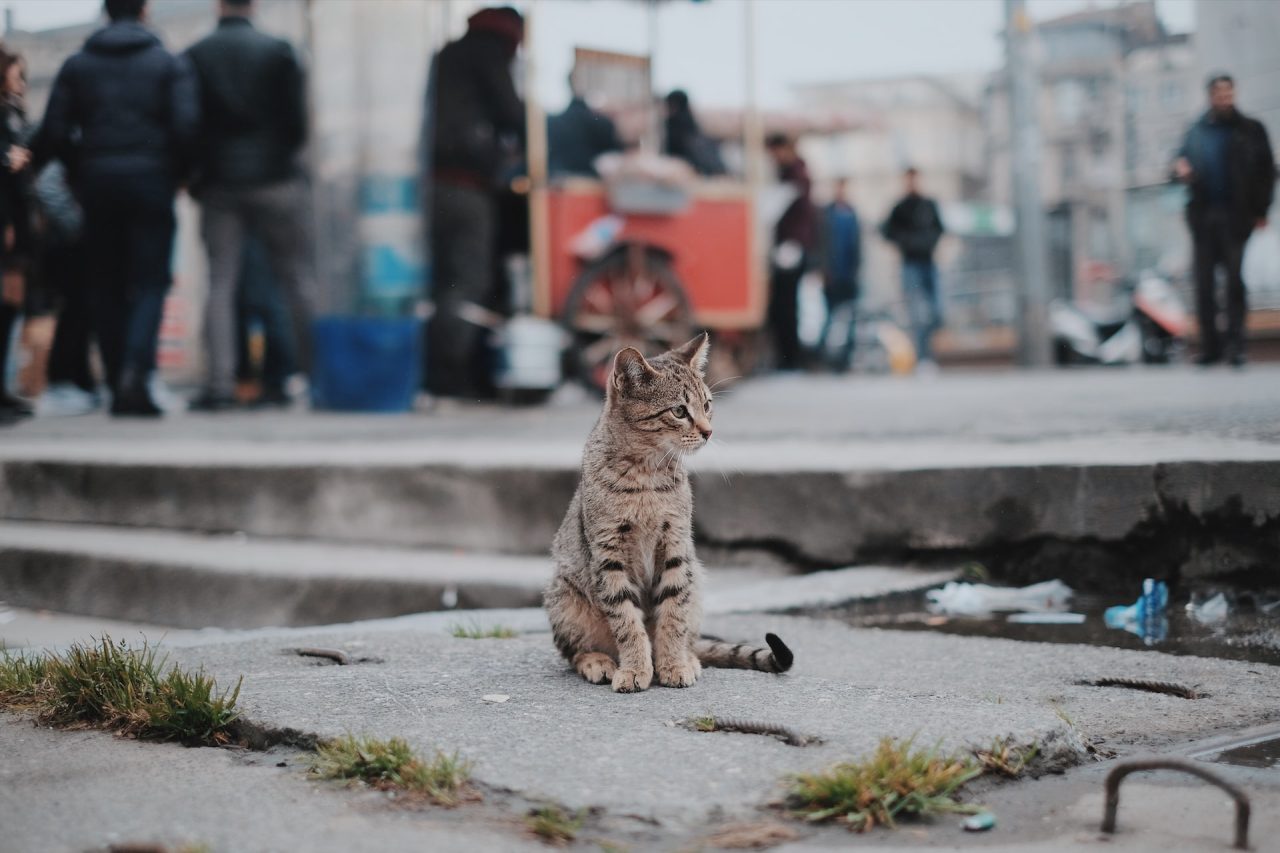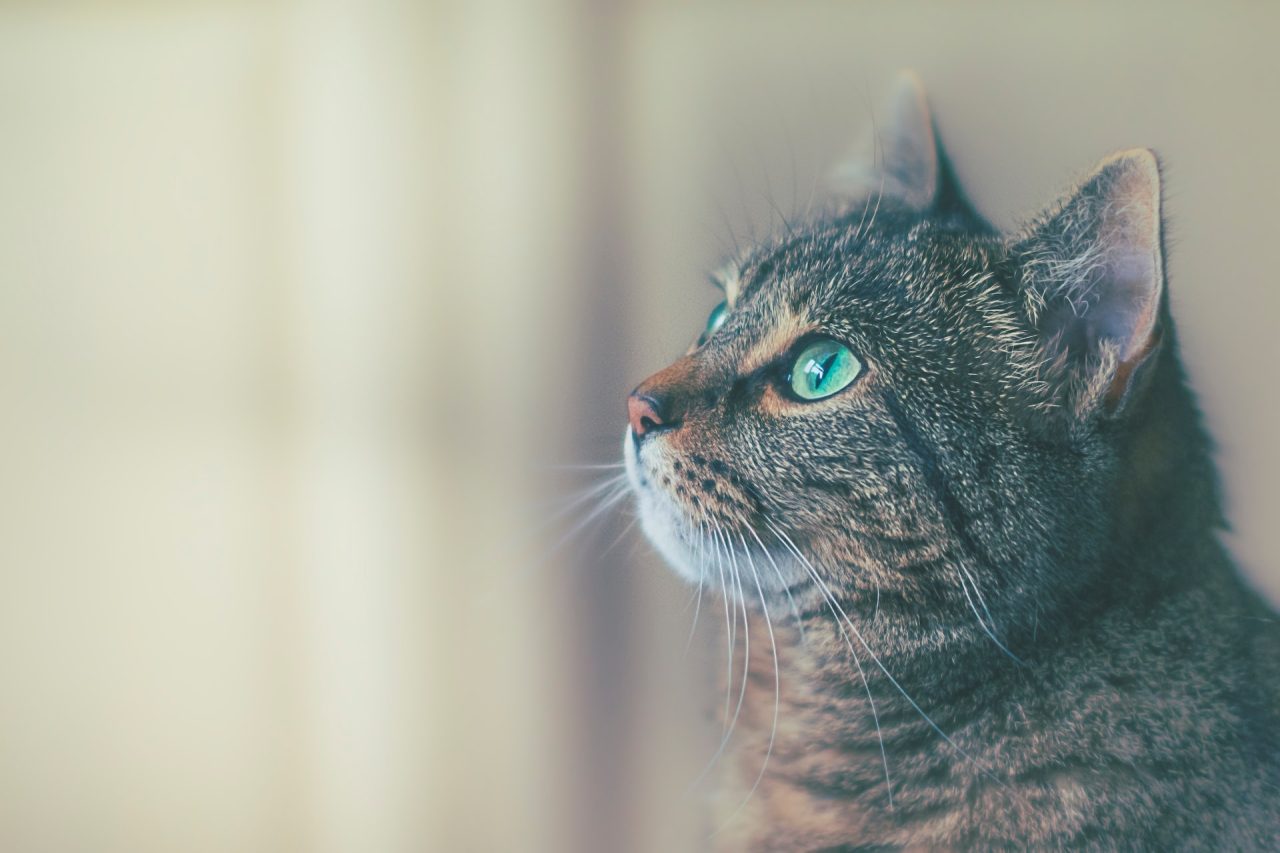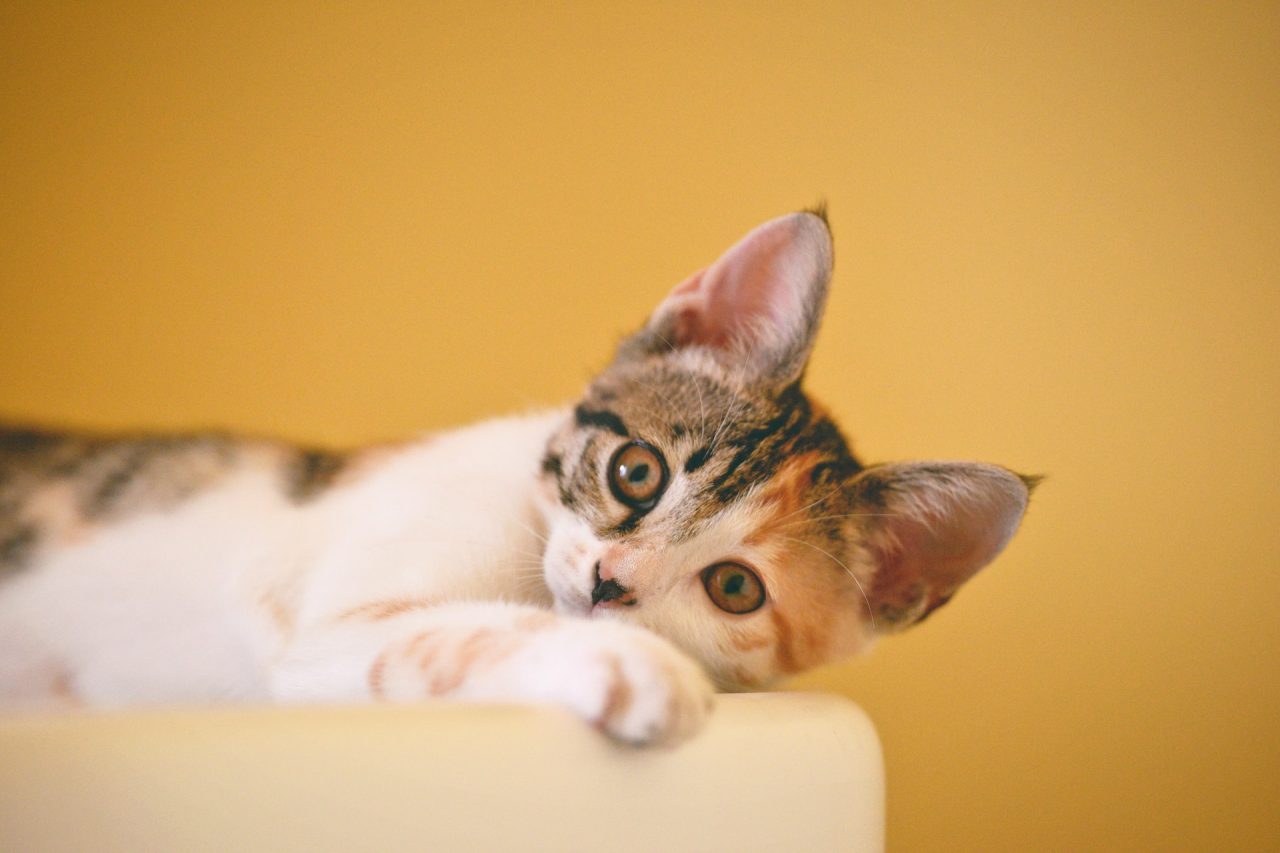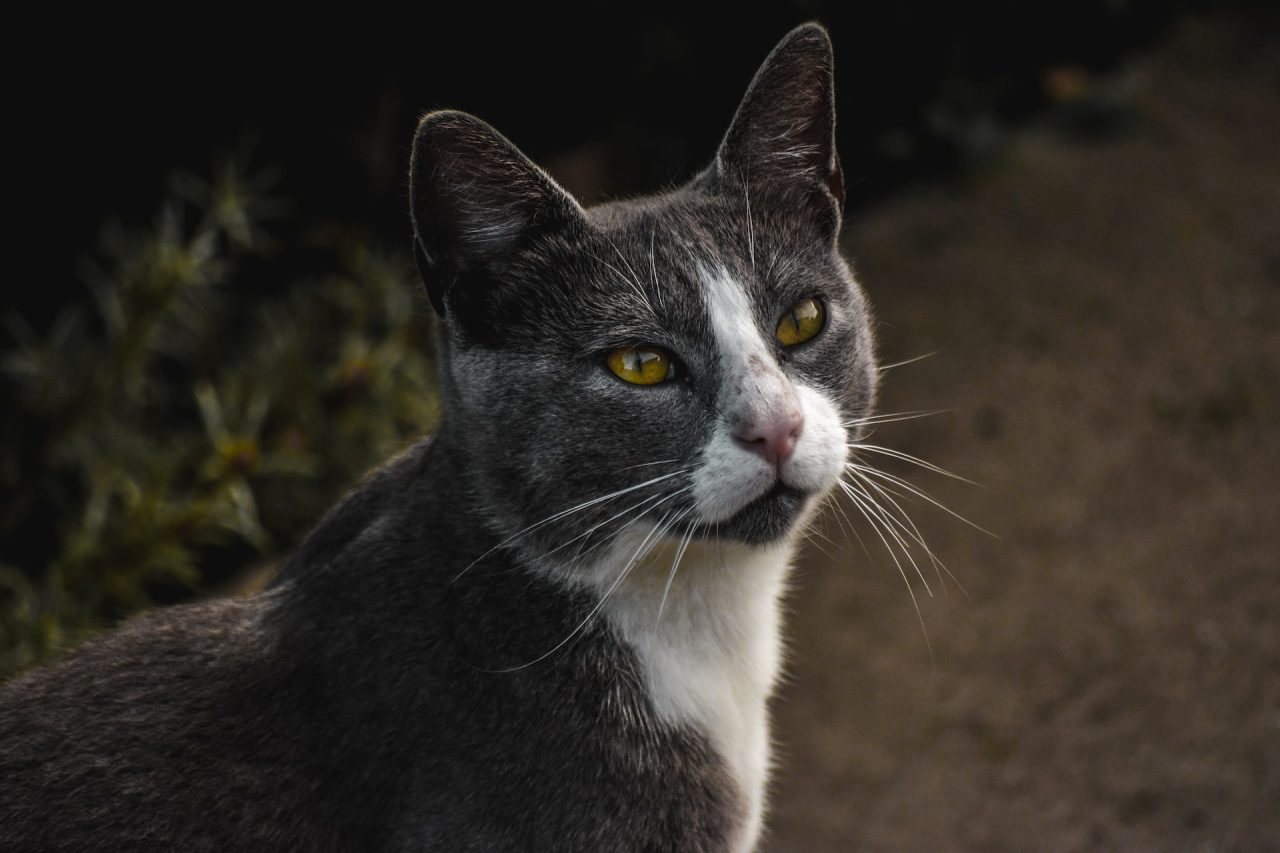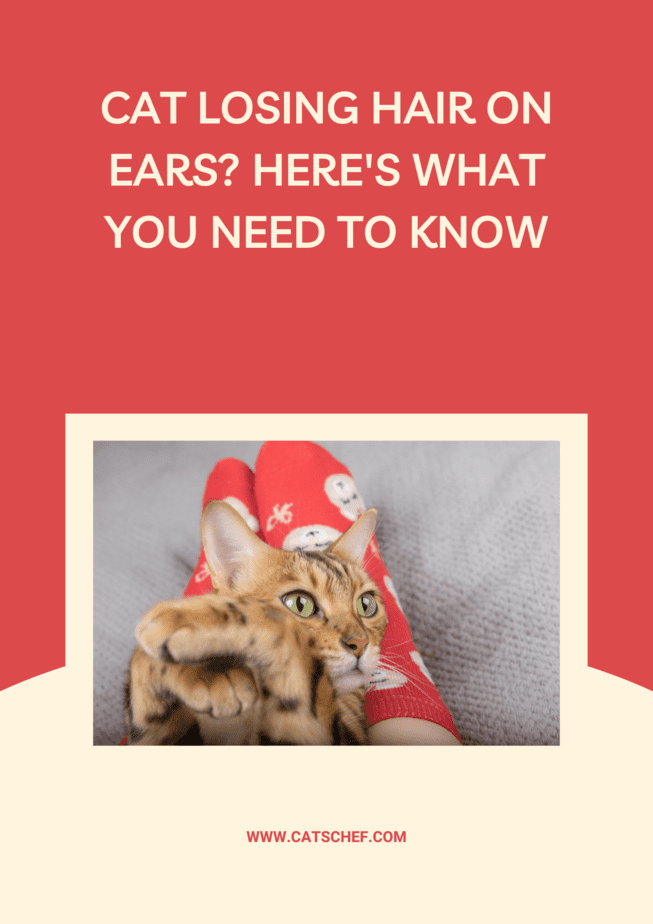📖 Table of Content:
Oh, the heart-wrenching feeling of running your hand through your cat’s fluff and having a bunch of strands come off! Or giving her a head massage only to find a bald patch right around her fluffy, little ears! “Is my cat losing hair on ears?!”, you mumble to yourself as your mood changes.
“Why would that happen to her?”, you continue the monologue as your eyes wander from your furry friend’s pouty snout to her toes and her beans. “Oh, you’re purrfect, baby! But, what are we going to do about that missing fluff, huh?”
Come on, there have to be a million reasons why stuff like this happens (other than the one coming to your mind).
Before you start freaking out about your (once fluffy) friend turning into a Sphynx, you might want to consider a couple of things. Cats lose a bunch of fluff during a lifetime, and there’s nothing more natural than shedding the old coat and getting a new one a couple of times a year.
But, on the off chance that you do have reason to believe your cat is losing hair on her ears, don’t shy away from contacting your vet. Cats can shed due to stress, poor eating habits, and different health problems and conditions that affect the skin and the coat.
And, we’ve done some digging to bring you an extensive list of reasons why your four-legged friend might be starting to resemble Dwayne The Rock Johnson a little too close to comfort. But, what’s the reason why some cats might start losing fluff early on?
What’s the deal with cats losing their fluff?
“My cat seems to be losing hair on her ears! She was rescued a couple of weeks ago but a bunch of fleas seems to have taken residence within her fluff giving her the worst case of itching and scratching I’ve ever seen! I’ve never dealt with a situation like this and I don’t really know where to start!”
Oh, does that sound like you and your feline friend? Trust me, you can’t go wrong with contacting your vet and asking for advice or even scheduling an appointment. Cats can start losing hair on different parts of their bodies for a bunch of reasons, and one of those reasons can be fleas.
But, let’s take a step back for clarity – losing hair can be hereditary or acquired. So, when you ask yourself something along the lines of “Hmm, could this be a normal thing and not a medical emergency?” when referring to your cat losing fluff, that’s the first question you answer.
Hereditary hair loss would be the “normal” one because it happens naturally and without a specific cause. For example, Sphynx cats typically don’t have any hair and you don’t see anyone freaking out over that. Or, Siamese cats tend to lose fluff on the outside of the ear pinnae as they grow older as a part of the natural progression of things.
On the other hand, acquired hair loss happens as a symptom of stress, a disease, or a condition. Hair loss can be permanent, meaning that the fluff that your cat loses doesn’t grow back. Or temporary (which means that the fluff grows back after the problem has been addressed, treated, or cured).
The more you know, right?!
Cat losing hair on her ears? Why does that happen?
Now that we’ve learned that, we can circle back to the question from the beginning of the article. “Why’s my cat losing hair on her ears? What’s wrong with her?” Maybe she’s stressed out or maybe she’s battling serious health problems. Whatever the case might be, we’re bringing you everything you need to know.
1. Hereditary hair problems, maybe?
Oh, her ancestors might have been lions, but your precious purrincess didn’t necessarily become an heir to that marvelous mane! That’s right, one of the biggest culprits of cats losing the fluff early on seems to be their genetic history. Cats can grow bald patches and lose a bunch of fluff because of genetics.
And, hereditary hair problems don’t have underlying causes (other than the transfer of the gene that’s responsible). Actually, that means that your feline friend’s ears don’t require treatment, and the fluff that’s been lost won’t grow back.
But, that’s completely fine because hereditary hair problems don’t cause discomfort or suffering.
Oh, and breeds that (typically) start losing fluff because of genetics are Burman, Burmese, Devon Rex, and Siamese. Not to mention Sphynx, but you wouldn’t get one expecting to have a head of fluff, would you now?
2. She’s getting older with each day
“Why’s my cat losing hair on her ears? She’s pretty old and she’s got a bunch of health problems. Oh, she would be SO gutted to lose her luscious fluff!”
But, to everyone’s demise, cats tend to shed a bunch when they become older (which seems to delineate why your senior cat needs a sweater during the winter).
As a matter of fact, when cats start losing hair because of their age, the ears and the face are the first to say “goodbye!” Cats can develop bold patches or start shedding a whole lot more than before. But, they don’t seem to care about their appearance that much which means you have nothing to freak out over.
And, such hair loss that comes with age doesn’t seem to cause suffering, discomfort, or affect your cat whatsoever. What a relief, don’t you think?
3. She’s stressed out
“My cat seems to be losing hair on her ears! She’s been feeling down for a couple of days, does that have anything to do with that?”
Maybe your four-legged friend’s been stressed out over something and you didn’t notice. Maybe she’s been fighting with your neighbor’s cat or losing sleep over the fact your friends have been visiting a little too much.
Whatever the case might be, she might be under a lot of stress that’s causing her to overgroom. And, overgrooming can cause bald patches and wear away at the fluff.
And, when you’re dealing with a case of psychogenic alopecia, you might want to consult with your vet. While playtime, cat trees, and cat scratchers might offer a helping hand, there’s a pawsibility your fluffy friend’s going to need some additional medication.
4. Her little ears got sunburned
Oh, the two of you have been sunbathing and sipping on coconut water the entire weekend? Maybe your mischievous monster earned a bad case of sunburn and that’s why she’s been losing hair on her ears! She might have overstayed her welcome a little bit, but you have nothing to worry about.
Sunburns, or solar dermatitis when you want to sound like you know what you’re talking about, aren’t that dangerous. And, they happen more often than you might think.
Cats that spend a lot of time outside might notice burns, flaky skin, and bald patches around the ears, the nose, and the eyelids (watch out for that third eye!).
But, with a little hat and an over-the-counter ointment, your feline friend should be as good as new. And, her ears might feel sore for a little while – make sure to protect them and keep them away from that big, shining ogre (the sun, of course).
5. Mites, maybe?
Oh, now we’re talking business! Pests and parasites seem to be the most common source of discomfort and suffering among felines. And, mites (being highly contagious parasites that they are) don’t shy away from making your feline friend’s life as miserable as possible.
That’s right, these crawling creatures cause severe itching and scratching that can easily lead to bald patches on the ears and the head. Sometimes they cause your feline to scratch to the point where the blood vessels within the ear rupture. And, that can’t be reversed without surgery.
Keep an eye out for other symptoms of ear mites such as shaking of the head, rubbing and pawing at the ears, redness, irritations of the skin, and a familiar, foul odor. Contact your vet the moment that you notice any of the symptoms because your feline might need medical care.
6. Have you checked for fleas?
“Why’s my cat losing hair on her ears? She keeps pawing at her fluff, grooming herself, and shaking vigorously – and I’m starting to think she’s not doing that because she enjoys pampering herself. What’s wrong with her?” We hate to break this to you, but your munchkin might have fleas.
Oh, you thought mites were the scratching culprits!? You might want to think again because the saliva lingering after a flea bites your little monster can cause her to scratch like crazy – to the point where it even has a name, flea allergy dermatitis.
And, your cat’s ears seem to be on the front line of scratching. Whether she’s rubbing her little head against the furniture, pawing and clawing at her ears, or meowing at you to give her a hand – she might start losing fluff on her ears sooner or later.
7. What about ringworm?
Yeah, ringworm doesn’t actually have anything to do with worms! Ringworm’s a fungal infection that can cause crusty bald patches on her skin, fur, and claws. When left untreated, ringworm can be pretty dangerous causing open wounds on a cat’s body weakening her immune system further and further.
Some of the most common symptoms of ringworm are the notorious red rings on your cat’s skin, bald patches, thinner fluff, wounds, sores, scratchiness, and deformed claws (due to the neverending cycle of scratching).
Contact your vet the moment that you start suspecting your feline friend might have the condition.
8. Have you ever heard of mange?
And, here we go again with another mite problem! Mange is the name humans use for a condition caused by parasitic mites. Parasitic mites are minuscule arachnids related to spiders and ticks that are contagious to humans, dogs, and other animals, too.
And, you guessed, mange causes severe cases of scratching, itching, and pawing at the skin resulting in bald patches, sores, and wounds. But, unlike other cases of pests and parasites, it also causes the skin to acquire a grayish, yellowish crust over the affected areas.
Some of the most common types of mange are scabies, demodicosis, ear mites, walking dandruff, and trombiculosis (and you don’t have to memorize any of them). And, don’t shy away from contacting your vet the moment that you start suspecting your fluff might have mange.
9. Atopy or allergy, which one’s the culprit?
First things first, atopies are allergies triggered by inhaling something your cat’s sensitive to (such as pollen, dust mites, or molds). On the other hand, “regular” allergies are triggered by consuming something she shouldn’t consume.
Both atopies and allergies can cause itching, scratching, wounds, sores, and bald patches.
So, your four-legged friend might have eaten corn products, dairy products, or even meat byproducts that might have caused her to suffer an allergic reaction. Oh, you might have thought that block of parmesan cheese was a good Sunday snack. But, you were wrong!
Both atopies and allergies require treatment from the vet. Make sure you contact yours the moment that you notice any of the symptoms. The most common symptoms are sneezing, wheezing, difficulty breathing, runny nose, drooling, vomiting, and diarrhea (along with rashes, wounds, and itchy sores).
10. Facial alopecia, maybe?
“Why’s my cat losing hair on her ears? She doesn’t seem to have health problems, she’s happy for the most part of the day, but we keep noticing her fluff thinning and falling out. What’s the deal with that?”
Maybe that sounds like something your four-legged friend’s dealing with. And, she might be dealing with alopecia. Alopecia seems to be a fancy way of saying your cat’s balding. But, we can’t overlook the fact that facial alopecia might be the culprit you’re looking for.
As a matter of fact, facial alopecia can be both hereditary and acquired. It can be caused by a bunch of things (stress, mites, fleas, and other parasites).
Not-so-fun fact, facial alopecia does seem to go for breeds that have dark, short fluff. Concat your vet the moment that you notice symptoms of alopecia. The treatment can only begin once your vet determines the cause.
11. Alopecia areata, maybe?
Another type of alopecia coming right through! Alopecia areata seems to be quite a mysterious condition with most humans unable to point the finger at what causes the patches. And, pretty much the only thing most humans can agree on seems to be the fact that this condition appears to be auto-immune.
Similarly to what we have discussed beforehand, alopecia areata causes your furry friend to scratch and paw at her head, neck, and back causing chunks of fluff to fall off. So, when you notice your cat’s ears are starting to appear brighter than your future, alopecia might be the one to blame.
Don’t shy away from scheduling an appointment with your veterinarian to help you identify the cause and offer you treatment options.
12. What about feline sebaceous adenitis?
“Why’s my cat losing hair on her ears? We’re starting to lose hope trying to figure out what’s causing the fluff to fall off!”
Oh, your curious creature might be dealing with something known as feline sebaceous adenitis. Sebaceous adenitis seems to be an inflammatory disease that attacks your cat’s sebaceous glands.
And, we’ve been putting this one off because it’s not that common among cats. But, that’s not to say that your feline friend might not be suffering from a form of this disease (considering the fact she’s been dealing with similar symptoms).
Unfortunately, sebaceous adenitis doesn’t have a cure (but can be managed with medication).
13. Have you checked for thyroid problems?
We can’t stress this enough – hyperthyroidism doesn’t have to be the reason why your cat’s losing hair, but we can’t overlook the pawsibility. Some of the most common symptoms are excessive hunger, excessive thirst, excessive urination, vomiting, diarrhea, behavior changes, and bald patches.
Hyperthyroidism occurs when your cat’s thyroid becomes enlarged and starts producing additional hormones. Cats that suffer from this condition often forget to groom themselves which causes itchiness, and scratchiness, and ultimately leads to bald spots.
And, hyperthyroidism can cause a bunch of other health problems which means you should make sure you contact your vet ASAP – there might even be a tumor at hand.
14. Have you checked for hormone problems?
“My cat seems to be losing hair on her ears! She hasn’t been doing anything out of the ordinary other than munching on pretty much everything she can get her paws on – we couldn’t get those Doritos out of her headlock! What’s going on?” Oh, have you checked her hormones?
That’s right; we’re closing the article with one of the least likely-to-happen reasons for bald patches on your cat’s ears. Feline endocrine alopecia seems to be the condition we’re looking for. Raging hormones are one of the top reasons for losing fluff.
But, that’s nothing that some hormonal supplementation can’t deal with! Contact your vet and schedule an appointment as soon as you start suspecting and Googling the symptoms. And don’t forget that such strong medications might have some side effects. Make sure you discuss that with your vet, too!
If you’ve also noticed that your cat’s ears are warmer than usual, then you need to read this.
